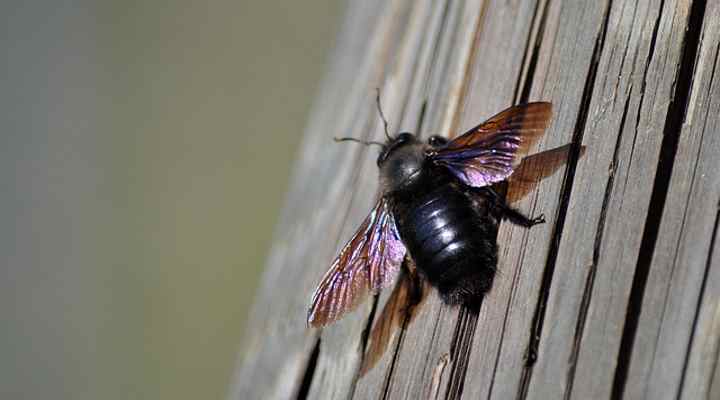

Dwarf honeybees haven’t been used for honey production since they produce very little honey compared to eastern honeybees. They get their name thanks to their smaller size – only measuring 7–10mm.


Red Dwarf Honeybees (Apis florea) are the most commonly found honeybees in tropical Asia. Newly hatched mason bees will hibernate over the winter and come out in spring. The males are smaller than the females and have a white spot on their face. Red Mason Bees (Osmia rufa) are small but mighty bees with a bronze-reddish color on their thoraxes. The red color is more apparent in the sunlight. Truly red bees are uncommon, however, there are a few species of bees that have deep red coloring. They’re typically considered solitary bees – although sometimes mothers will share nests with their daughters. Their eye-catching coloring and loud buzzing easily grab attention wherever they fly. Green Carpenter Bees (Xylocopa aerata) are the largest native bees in Australia. Interestingly enough, some species of orchid bees have tongues that are twice as long as their bodies. They’re gentle-natured bees that are unlikely to sting. Green Orchid Bees (Euglossa dilemma) are about the size of honeybees, but they’re easily distinguishable with their green coloring. Sweat from humans offers them precious moisture and salts needed for their diet. One of the most apparent traits of sweat bees is their attraction to sweat. Green Sweat Bees ( Halictidae) are beautiful metallic green bees that only measure about 1/4 inch long. But many of them are so small that they go unnoticed. Green-colored bees are common in the southern United States. They’re buzz pollinators, which means they vibrate their wings to shake the pollen out of flowers. The female carpenter bees use their strong mandibles (jaw) to make perfectly round nesting holes.īlue Banded Bees ( Amegilla cingulata) are native to Australia and have beautiful blue-striped abdomens. As their name suggests, carpenter bees are known for building nests into wood. They’re native to Southeast Asia, India, and China.

They’re also solitary bees that live alone – not inside social colonies with other mason bees.īlue Carpenter Bees ( Xylocopa caerulea) are large bees with a hairy blue thorax. They’re avid pollinators of fruit crops such as apples, pears, plums, peaches, and blueberries. Their blue coloring is especially noticeable when the sunlight hits them.īlue Orchard Mason Bees ( Osmia lignaria) are a deep metallic blue with small amounts of fuzz. Several species of blue-colored bees exist all over the world. Instead, sweat bees live alone.īut what other types of colored bees are there? They’re small, gentle bees that don’t live inside social colonies like bumblebees. Sweat bees (Augochlora pura) are metallic green bees native to the eastern United States. Some bees are small and brightly colored, while others are big and dark-colored. Meaning, each bee species has unique physical characteristics that set it apart. There are more than 20,000 bee species around the globe. Honeybees and bumblebees are two common examples of this. That said, most people think of yellow or black colors when they think of bees.


 0 kommentar(er)
0 kommentar(er)
